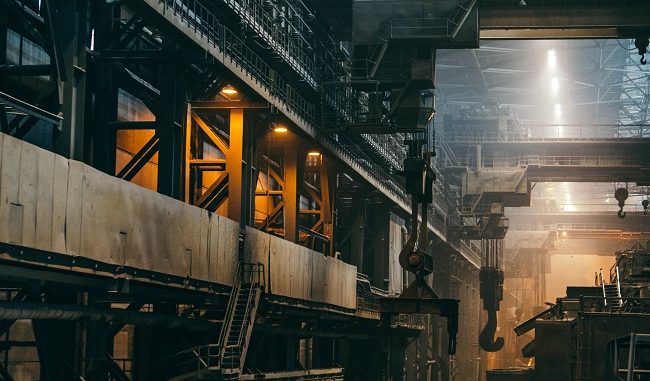
Large factories, refineries, and oil facilities are all industries that require special considerations for their electrical wiring. Heavy-duty applications and hazardous environments must use products built to resist corrosion. Chemicals, rain, snow, wind and other threats damage industrial wiring. As a result, good maintenance and repairs are imperative.
Cable Trays for industrial wiring
The backbone of many industrial wiring configurations is the cable tray. Most often made of aluminum, the cable tray appears like a ladder, with welded rungs that connect a pair of sidewalls. Cable trays feature factory-made holes at either end that allow quick connection by use of joiner plate kits. Pre-made corners, T’s, reducers, or waterfalls connect to the tray with joiner plates, allowing for smooth corners.
To achieve a change in elevation, articulated swivel plates are available that act like joiner plates, but have an adjustable hinge that can be locked in place. Hence, it is possible to create mitered corners for installation in tight locations. The biggest advantage to a cable tray system is that cables can be added or removed as needed. One run of tray typically holds cable from a variety of circuits.
During installation, keep in mind the following issues. For long, straight runs of tray, expansion plates will be needed. Because metal expands and contracts in different temperatures, trays installed outdoors should have expansion plates to prevent buckling or stretching. Ensure that bonding jumpers are connected across expansion plates, while having a small amount of slack, usually achieved by bending the wire into an “S” shape.
Teck Cable
With a properly installed tray system, the next step includes teck cable. This armored cable with an exterior jacket, comes in nearly any combination of conductor sizes, voltages, and cores. Fiber optic, CAT6, and shielded twisted pair cables are available. These are usually color-coded based on their type. Teck cables can be pulled through cable tray, conduits, or buried underground. For buried cable, ensure that it is placed at the appropriate depth, protected by layers of sand, spaced properly, and that buried cable warning tape is conspicuous.
Some clients request protection for buried cables; therefore bricks, concrete slabs, or planks of wood are utilized. Where cables emerge from the ground, they should be protected by a PVC conduit sleeve. Teck cables must be secured to the rungs of the tray using approved Ty-wraps or cable clamps. This not only keeps cables neatly arranged, but reduces the chances of damage.
Connectors
Once a teck cable has been fed to its destination, it is connected by use of a teck connector. These connectors serve two purposes. The threaded end puts tension on the cable by means of a rubber gasket, which holds the cable securely in place. In addition, a small metal star-ring inside the connector makes contact with the metal armor of the cable, bonding it to the connector. This is why, when preparing a cable for the connector, that 3-4 rings of cable armor are left exposed.
In locations with potentially hazardous or explosive gasses, explosion proof connectors must be used. They have a small internal chamber meant to hold an epoxy sealing compound. This seal contains an explosion in the event of a failure. In addition, it prevents gasses from traveling through the small gaps between wires to potentially non-hazardous locations where arcs and sparks cause harm.
Good working knowledge of industrial wiring applications is essential to ensure safe and reliable installation. Finally, with the use of heavy-duty materials, a facility can expect many years of problem-free service.

